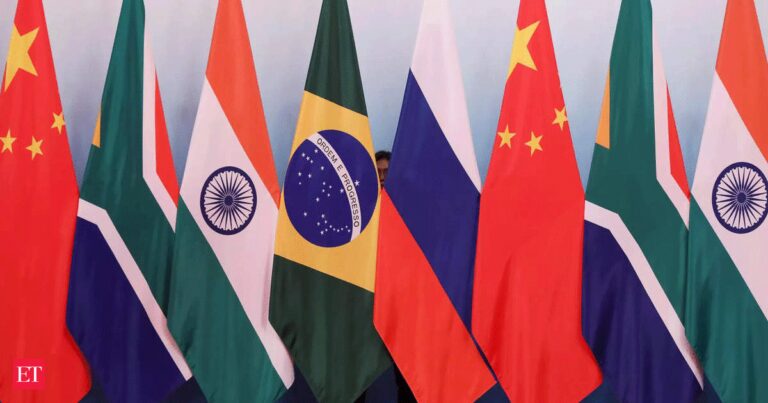EY India on Wednesday said the BRICS+ group’s share of global merchandise exports could overtake the G7 bloc by 2026. The October issue of EY Economy Watch reveals major changes in global trade trends, with the BRICS+ group rapidly expanding its share of goods exports and imports.
From 2000 to 2023, the BRICS+ group’s share of global merchandise exports increased from 10.7 percent to 23.3 percent, a significant increase of 12.6 percentage points.
In contrast, the G7 participation rate fell from 45.1 percent to 28.9 percent, a notable decline. Meanwhile, the rest of the world has maintained a relatively stable share, increasing slightly from 44.2 percent to 47.9 percent.
The G7 is a group of developed economies: the United States, Canada, France, Germany, Italy, Japan, and the United Kingdom.
This trend highlights the growing prominence of the BRICS+ group in the global trade arena and signals a possible shift towards multipolarization of the global economy, EY India said.
“Given current trends and the likely strong addition of several new members to the BRICS+ group, BRICS+’s share of global merchandise exports could overtake that of the G7 group by 2026.” said DK Srivastava, EY India Senior Policy Advisor. BRICS is comprised of Brazil, Russia, India, China, and South Africa, and is currently expanding with the addition of five additional member countries: Egypt, Ethiopia, Iran, Saudi Arabia, and the United Arab Emirates. India and China, key members of the BRICS+ alliance, are fundamental to this transformation. In 2023, they were ranked third and first in the world, respectively, in terms of purchasing power parity (PPP). Both countries are expected to maintain these positions by 2030.
China’s contribution to BRICS+ exports has increased dramatically, rising from 36.1% in 2000 to 62.5% in 2023. India has also made significant progress, contributing 7.9% to BRICS+ exports in 2023.
EY’s analysis further highlights the growing importance of high-tech exports from BRICS+ countries.
The group’s share of global high-tech exports has increased significantly from just 5% in 2000 to 32.8% in 2022.
This change reflects a strategic move towards technology-intensive products and positions BRICS+ countries as important players in the global high-tech market, he added.
In addition to trade trends, the currencies of BRICS+ countries are establishing themselves in the global economy. While the renminbi has remained stable with some appreciation, the Indian rupee has been depreciating, especially since 2018.
In particular, the US dollar’s share as the world reserve currency has declined from 71.5 percent in 2000 to 58.2 percent in 2024, indicating a possible transition to a more multipolar monetary framework.
“As geopolitical tensions continue, coordinated policies among BRICS+ members could challenge the established dominance of the G7 and the US dollar and pave the way for a new multipolar global economic landscape,” Srivastava said. said.
The BRICS+ group is building a platform for conducting international trade and investment transactions. This could be a low-cost alternative to existing SWIFT platforms.
The group is also developing commercial and reserve currencies backed by gold and other selected commodities, Srivastava added.
Nominations are now being accepted for the ET MSME Awards. Last date for applications is November 30, 2024. Click here to submit your entry in one or more of the 22 categories for a chance to win prestigious prizes.
Source link


